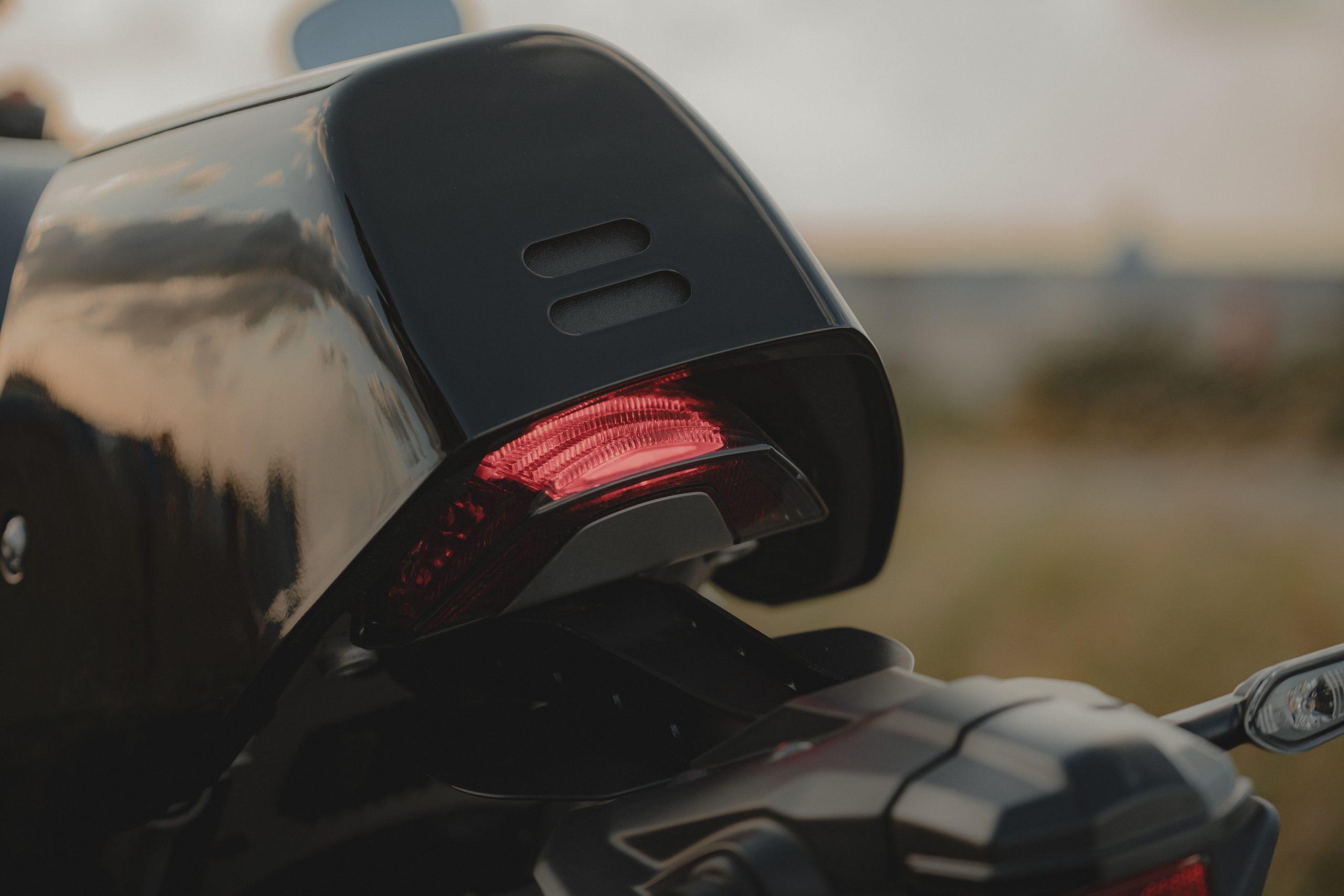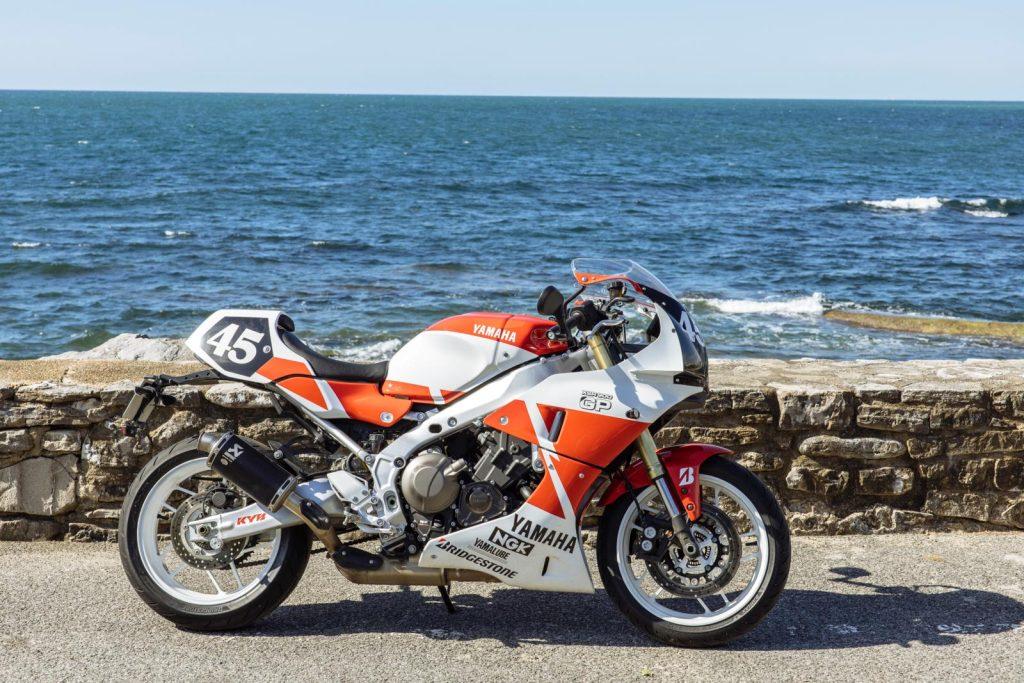Yamaha XSR 900 GP Review
Ever since I saw the first pictures, I couldn’t shake the Yamaha XSR 900 GP from my mind. That classic red-and-white livery, with its throwback to racing history, was the bike’s unmistakable look. While I couldn’t get that version for this review, I was thrilled anyway to have the chance to ride the XSR GP and experience firsthand what this bike has to offer.
And to make up for the grey, we will add some shots of special editions used for the 2024 edition of Wheels and Waves, courtesy of Yamaha.

Design and Details
The XSR 900 GP builds upon Yamaha’s proven three-cylinder engine, an incredible platform that has successfully powered a range of models, from naked and retro bikes to adventure bikes. This latest GP variant adds even more character to an already iconic design. The most noticeable change is the fairing, which required modifications to the cockpit and controls, shifting the rider’s position and enhancing the GP feel. With the new full-colour TFT display and updated controls on the bars, Yamaha hasadded a fresh, modern interface. Some might find the button layout crowded, but overall, the setup feels intuitive and user-friendly.

One particular update took me by surprise: the “Autobahn mode” for the indicators, which activates a three-blink sequence with a light touch, similar to car indicators. While convenient in theory, I found it tricky to operate while wearing gloves, often missing the subtle touch needed to activate it correctly. For regular use, cancelling the indicator requires a double press instead of the usual middle button, which took some time to adjust to.

Beyond the display and control updates, the digital interface offers extensive customization. The bike features multiple riding modes, along with adjustable ABS settings, slide control, and lift (wheelie) control. You can configure each setting individually or save them into one of five customizable modes. The interface includes pictograms to clarify each option, and the bike remembers any adjustments made, even between rides. Though it doesn’t offer electronic suspension control, the XSR GP feels as configurable as Yamaha’s higher-spec MT-10SP.

Performance and Ride
After taking in all the new features, it was time to see how the XSR 900 GP performs on the road. On paper, it’s similar to the standard XSR, but the GP’s refined details elevate the ride to another level. The riding position is sporty without being extreme—a marked improvement over the XSR Abarth, which was less comfortable for longer rides. The seat and cockpit design capture the feel of 90s sports bikes, a golden era when handling and aesthetics truly aligned. For me, this was a nostalgic throwback to my early riding days. It took a few minutes to adjust to the forward-leaning position, but once I got comfortable, the bike rewarded me with a thrilling, immersive experience.

One of the most notable changes from the standard XSR is the longer swingarm, which extends the wheelbase and makes the bike feel more forward-oriented, reducing the likelihood of accidental wheelies. While that might mean slightly less fun for some, the setup enhances stability and focus, making it a better fit for serious riding. With the quickshifter, traction control, ABS, and even cruise control, Yamaha has equipped this bike with modern conveniences while retaining a classic feel. Every element keeps you engaged, making each ride feel like a deliberate, hands-on experience.

Riding Experience
Riding the XSR 900 GP isn’t just a journey from point A to B; it’s a celebration of the act of riding itself. Every time I set off, I felt an urge to lean low behind the screen, even when the road didn’t call for it. The bike invites you to channel your inner racer, from navigating highway exits with a bit of knee drag to rethinking your attire for the occasion—one-piece leathers felt like the right choice. It’s not retro in a strictly traditional sense, but more a modern embodiment of classic racing spirit. The bike’s stable, modern chassis and responsive suspension remind you that, while inspired by the past, it’s equipped for today’s roads and expectations.

The dash and controls might feel slightly modern for those looking for a pure vintage experience, and I could see some enthusiasts opting for aftermarket analog dials or simplifying the controls to get an even more classic feel. But the XSR 900 GP strikes a balance, offering just enough tech for convenience without overpowering the raw riding experience.

Final Thoughts
The two weeks I spent with the XSR 900 GP were some of the most thrilling riding experiences of my summer. As much as I’d love to keep riding it, life and responsibilities eventually called me back to my everyday commuter. However, before returning it, I finally had a chance to see the red-and-white livery in person—and let me tell you, it is stunning. That classic colour scheme is undoubtedly the one to go for if you are interested in purchasing this magnificent piece of machinery.

In conclusion, the Yamaha XSR 900 GP is a beautifully crafted blend of nostalgia and modern performance. It’s more than a bike; it’s an experience that takes you back in time while staying firmly grounded in the present. Whether you’re a seasoned rider looking to recapture the magic of 90s sports bikes or a newer rider intrigued by Yamaha’s racing heritage, the XSR 900 GP has something to offer. While I’m not sure if I’d buy one just yet, largely due to a few practical preferences, I can confidently say this bike will leave an impression on anyone lucky enough to ride it.


All photos of the Power Grey by Gijs Paradijs, coprighted, all rights reserved 2024. Remaining photos of the other colour schemes by courtesy of Yamaha, copyright 2024.





